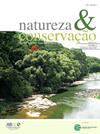Maintenance of a scavenger ancient food web in insular remote areas
IF 3.5
2区 环境科学与生态学
Q1 BIODIVERSITY CONSERVATION
引用次数: 0
Abstract
Vultures are among the most endangered bird species, and changes in their feeding habits due to human activities pose a significant threat to their survival. We studied aspects of the trophic ecology of Andean Condors (Vultur gryphus) in Tierra del Fuego, an archipelago in the southernmost part of its distribution, and compared it with other six sampling sites across Argentina. We estimated the isotopic niche width, the trophic position, and the extent of marine input on condors at a large spatial scale. Andean Condors in Tierra del Fuego exhibit a unique and substantial reliance on marine food webs, which matches the known historical trophic interactions of the species. In contrast to continental Patagonia, the marine trophic input was not homogeneous among individuals, but structured in two groups along the terrestrial – marine gradient. Marine carrion provided by sea lions, seabirds and stranded cetaceans should be monitored since they can be relevant for the long-term persistence of Andean condors in the area. Moreover, the link of condors with the ocean would also include the movement of marine inputs to terrestrial environments. As most condor samples were obtained in protected areas in the terrestrial-marine interphase, this further emphasizes the importance of preserving these areas in the face of environmental change to conserve not only the species and its landscape but also specific trophic interactions.

偏远岛屿地区古代食腐动物食物网的维护
秃鹫是最濒危的鸟类之一,由于人类活动而改变了它们的摄食习惯,对它们的生存构成了重大威胁。我们研究了安第斯秃鹰(Vultur gryphus)在火地岛(其分布最南端的一个群岛)的营养生态学方面,并将其与阿根廷其他六个采样点进行了比较。我们在大空间尺度上估算了秃鹰的同位素生态位宽度、营养位置和海洋输入的程度。火地岛的安第斯秃鹰表现出对海洋食物网的独特而巨大的依赖,这与该物种已知的历史营养相互作用相匹配。与巴塔哥尼亚大陆相比,海洋营养输入在个体之间不是均匀的,而是沿陆地-海洋梯度分为两个群体。应监测海狮、海鸟和搁浅鲸类动物提供的海洋腐肉,因为它们可能与安第斯秃鹰在该地区的长期生存有关。此外,秃鹰与海洋的联系还将包括海洋输入到陆地环境的运动。由于大多数秃鹰样本都是在陆海间期的保护区获得的,这进一步强调了在面对环境变化时保护这些地区的重要性,不仅要保护物种及其景观,还要保护特定的营养相互作用。
本文章由计算机程序翻译,如有差异,请以英文原文为准。
求助全文
约1分钟内获得全文
求助全文
来源期刊

Perspectives in Ecology and Conservation
Environmental Science-Nature and Landscape Conservation
CiteScore
7.80
自引率
4.30%
发文量
46
审稿时长
59 days
期刊介绍:
Perspectives in Ecology and Conservation (PECON) is a scientific journal devoted to improving theoretical and conceptual aspects of conservation science. It has the main purpose of communicating new research and advances to different actors of society, including researchers, conservationists, practitioners, and policymakers. Perspectives in Ecology and Conservation publishes original papers on biodiversity conservation and restoration, on the main drivers affecting native ecosystems, and on nature’s benefits to people and human wellbeing. This scope includes studies on biodiversity patterns, the effects of habitat loss, fragmentation, biological invasion and climate change on biodiversity, conservation genetics, spatial conservation planning, ecosystem management, ecosystem services, sustainability and resilience of socio-ecological systems, conservation policy, among others.
 求助内容:
求助内容: 应助结果提醒方式:
应助结果提醒方式:


